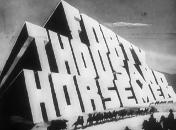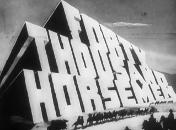AustLit
Latest Issues
AbstractHistoryArchive Description
Production Details
-
Additional incidental music by Alfred Hill.
Publication Details of Only Known VersionEarliest 2 Known Versions of
Works about this Work
-
Films That Help Us Remember Them
2020
single work
column
— Appears in: The Weekend Australian , 25 April 2020; (p. 13)'On May 1, 1980, I was invited to attend a reception held at the Hilton Hotel in Sydney, at which two of Australia’s best-known businessmen made an important announcement to the invited guests. The men, Rupert Murdoch and Robert Stigwood, were Australians who were well known around the world: the “media magnate and [the] entertainment entrepreneur” (as The Sunday Telegraph reported a few days later) used the occasion to announce the formation of a new company, R&R (later known as Associated R&R Films), a joint venture between News Corporation and the Robert Stigwood Organisation; the latter company had been responsible for hit films such as Tommy, Saturday Night Fever and Grease. A total of $10m would be invested in local productions, the first — and, as it turned out, the last — of which would be Gallipoli, directed by Peter Weir, produced by Patricia Lovell and scripted by David Williamson.' (Introduction)
-
Unsung Aussie Filmmakers – Grant Taylor : A Top Ten
2019
single work
essay
— Appears in: FilmInk , 29 July 2019; -
“They Said It'd Be an Adventure” : Masculinity, Nation, and Empire in Centennial Australian World War I Film and Television
2018
single work
criticism
— Appears in: Journal of Popular Culture , vol. 51 no. 6 2018; (p. 1356-1375)'The World War I Gallipoli campaign in modern Turkey in April 1915 was calamitous from the outset, with the amphibious assault by British and Allied forces landing well off course. Australia's first major military engagement since achieving nationhood in 1901, its chief success would become their stealth evacuation, which saw seventy thousand men covertly withdrawn over nine days and nights in December 1915. The campaign was ultimately futile and deemed immaterial to the outcome of the war. Such an ignominious defeat at the hands of the Ottoman Empire would seem an unlikely source for a national myth. It lacks, for example, “the psychic reassurance of triumph over the sources of threat” and the defeat of enemies that Graham Dawson identifies as a key psychic and social function of adventure narratives and soldier heroes (282). Yet, the ill‐fated Gallipoli campaign is popularly held in Australia's cultural imagination as the “birth of a nation” for a former colony then still under the yoke of the British Empire. In Australian politics and culture, the youthful nation's presumed character was forged in war and embodied in the deeds of its young men, in spite of ultimate defeat.' (Introduction)
-
What Do Mad Max's Six Oscars Mean for the Australian Film Industry?
2016
single work
column
— Appears in: The Conversation , 1 March 2016; 'The career of Dr George Miller reminds me of that of Charles Chauvel, one of the greatest showmen of the Australian cinema. Both men – though separated by many decades – have employed epic cinematic forms and nationalistic themes. ...' -
Rewind : The Making of Breaker Morant
2016
single work
column
— Appears in: FilmInk , 25 April 2016;
-
Portraits of Settler History in The Proposition
2006
single work
criticism
— Appears in: Senses of Cinema , January - March no. 38 2006; 'Hailed as an antipodean Western, this Nick Cave scripted and John Hillcoat directed feature raises considerable debate about the representation of Australia's colonial history.' (Publisher's abstract)
-
y
 Featuring Australia : The Cinema of Charles Chauvel
Sydney
:
Allen and Unwin
,
1991
Z808336
1991
single work
biography
Featuring Australia : The Cinema of Charles Chauvel
Sydney
:
Allen and Unwin
,
1991
Z808336
1991
single work
biography
-
Memories of a Movie Maverick
2013
single work
column
— Appears in: The Courier-Mail , 27-28 July 2013; (p. 10-11) -
Lights, Camera, Fire! Cinematic Representations of World War I's Middle East Front and its Palestine Campaign
2013
single work
criticism
— Appears in: Journal of the Royal Australian Historical Society , December vol. 99 no. 2 2013; (p. 170-189) 'Two important Australian feature films, separated by nearly 50 years, form the basis of this article's examination of World War I's Middle East front through a study of the cinematic corpus referring to the war and its images. Charles Chauvel's 40,000 Horsemen (1941) and Simon Wincer's The Lighthorsemen (1987) offer a spring board for the exploration of the visual aspects of viewers' historical, social and cultural memory shaping the nearly forgotten story of the forces of the British Empire that fought in Palestine and Eastern Transjordan. The cinematic medium developed its own unique signs for wars, usually portraying wartime as a romantic epoch, and not as death and destruction.' (Author's introduction) -
Our Golden Age
2014
single work
column
— Appears in: The Weekend Australian , 29-39 March 2014; (p. 12-13)
-
Cairo,
cEgypt,cNorth Africa, Africa,




